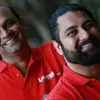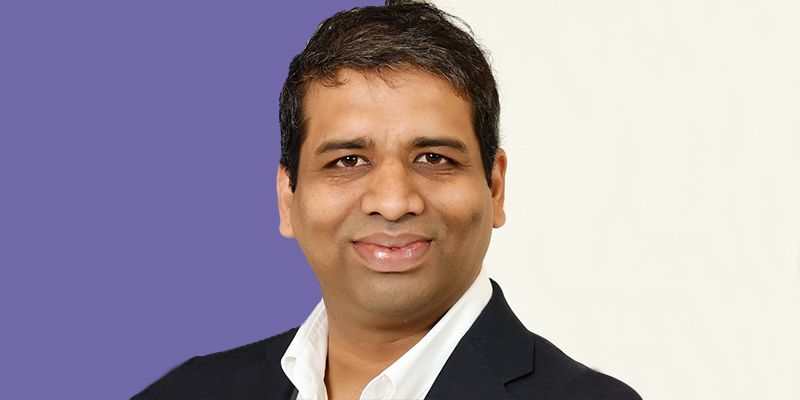[Behind the scenes] Here's how Cure.fit plans to reach 100 million users in 10 years
In an app-ridden world, getting anything from a ride to a safety pin on demand is second nature. Yet, it’s the ‘behind the scenes’ of apps that seamlessly creates synergy. ‘Behind the Scenes' is YourStory's journey into understanding the precision with which all these dynamics work together.
In the latest series, YourStory goes ‘Behind the Scenes’ to understand the workings of some of the most intriguing tech startups in the Indian ecosystem. In this edition, we profile , the Bengaluru-based healthcare brand. In two years, Cure.fit has captured different verticals of the healthcare ecosystem. But what makes it easy for Cure.fit to integrate technology in such a strong offline model?
Bengaluru’s HSR layout is known for its planned houses, eateries, and in the past five years, startups. It makes a lucrative spot for several startups, as they dot one of the service lanes of the area, close to Koramangala, one of the central business districts of the city. One of those buildings belongs to Mukesh Bansal and Ankit Nagori’s startup, Cure.fit.
When the duo had left Flipkart to startup Cure.fit, there was much talk on what the startup would do. While a health and fitness startup seemed like an obvious choice for the duo, what was interesting was that it had already raised a significant capital without even an app.
In the early days when we met Mukesh, the office was a small bungalow in the same area. At the time, he said, “Cure.fit isn’t just about fitness. We are looking to build an entire healthcare ecosystem. It starts with fitness, then there is food, mental wellbeing, and prevention.”

Mukesh Bansal, Co-founder and CEO, Curefit
Becoming a healthcare ecosystem
True to this vision, today, Cure.fit has four main verticals - Cult.fit for fitness; Eat.fit, a healthy food subscription platform; Mind.fit for mental health and wellbeing; and now, Care.fit, focussed on diagnostics.
In the past two years, the startup has raised $294 million in eight funding rounds, and recently, has also opened its centre in Jammu and Kashmir. It is present in Bengaluru, Mumbai, Delhi-NCR region, Hyderabad, Chennai, Jaipur, and recently, it launched in Dubai. Cure.fit’s services are used by over 500,000 active subscribers.
It has over 180 Cult.fit centres and 35 Mind.fit centres, and aims to increase this to over 800 centres by 2020. Currently, Eat.fit is serving over 35,000 meals per day and doubling this every three months. In April 2019, Cure.fit acquired cold-pressed juice brand Rejoov for an undisclosed amount.
While healthcare has several offline aspects – fitness centres, food, and diagnostics, the team is focussed on deeply integrating technology. And, this scale is possible only by leveraging technology. But how does that work?
While health habits of the consumers have changed over the past few years, there is a need for a new tech-driven approach for great consumer experience, Mukesh said.
Integrating technology from day zero
Speaking about how the team ensures integrating technology from the product level, Vikas Bansal, Product Head, Cure.fit, says,
“The core idea is to make health easy. All of us want to be healthy. But it is tough for us to follow a routine and regime. So, our core product focus is on how to make the whole process easy and fun for the user. We want the user to understand that it is good to be healthy, both in the short and long term. It was one of the reasons why we chose to make Eat.fit a subscription-based product. The primary reason being, healthy food needs to be a part of the everyday diet. Focussing on this helps users build it as a daily habit.”
But how does that translate on ground? Each Cure.fit centre has classes and sessions based on user preferences, demography, and choices. It is a no brainer. The algorithms are trained to diagnose data, check user behaviour and patterns, and throw up choices accordingly. But this works at scale. How did the team build these algorithms?

Inside the Curefit office
Ankit Gupta, Head of Engineering and Organisation Operations at Cure.fit explains the first step begins with collecting data and ensuring everything happens on the system.
“While the first product will not have data to back it, and works on pure insight, it begins with manual input that is immediately recorded into the systems. Based on this, a feedback cycle is built, which can be quickly automated. First, the opinion of an expert is taken into account, they look at the data and make the first few iterations. And simultaneously, the automation begins,” he says.
Bringing tech to traditional gyms
Ankit says, if you look at Cult, it works differently from the traditional gyms. Apart from the fact that there are no machines or traditional gym equipment at any Cult centre, it is a class-based format, where the user chooses based on his/her convenience.
The first vertical, Cult.fit, works in a simple way. The onboarding, class, and timing selection happens on the app, where the customer books their class they want at a centre convenient for them. At the centre, another app records the details of the student. All the customer have to do is attend the session.
Everything is done by the machine. Apart from scheduling classes, the event and the trainer allocation for over 400 classes every day across the different centres, are done online. The routines are planned down to the sub-routine levels, with the steps needed for every stage of an hour-long class for the trainers.
The trainer’s app tracks class schedules, preferences, workouts, ratings, and even feedback. Even the locations of each new centre are determined by the machine. These are done based on data points, demography, type of locality, and facilities available.
The only human interaction happens is during the session.
And if you look at the end-user, the digital interaction is minimal. Ankit adds that the team ensures the tech doesn’t get in the way. It only focusses on providing glitch-free services to over one lakh people who come for a workout.
This means the user can see the classes they want, at the place they want, and at the time that is convenient for them. “If one user isn’t able to find their favourite yoga class at 8 in the evening, then everything fails,” adds Ankit.
Training the trainers
Apart from the apps, the company ensures that the trainers are trained in the right manner. If a user goes from one centre to the other centre, they should have a uniform experience.
“The trainer app also gives the trainer the profiles of the students attending the class - if they are beginners or at an advanced level, without disclosing any personal data. We also tell them what is supposed to happen in the class. For example, if it is a yoga class, the trainer knows the asanas they need to begin within the first five minutes of the class,” says Ankit.
While this happens for the benefit of the end-user, Cure.fit also trains its trainers. A few blocks down the road, there is another centre - the Cult.fit training centre, where the trainers are trained.
“Each trainer is given intensive training for several weeks. An examination is conducted for the trainers on the app, followed by a fitness exam,” says Rishabh Telang, Fitness Expert, Cure.Fit. Only when the trainers pass all the parameters, they are sent to the centres.
Ankit adds that each centre has managers and housekeeping staff who are managed by an app. The centre manager knows well in advance what time the centre will have to open, what all things need to be present, the trainers that will be present, and other details.
They also know the capacity of each class and how many people will be attending, so they can plan. The centre managers are also given control, so they can take decisions on a real-time basis.
Making healthy food a daily habit
Once the systems were in place for Cult.fit, the next step was to build and integrate it for a platform like Eat.fit. As Ankit earlier mentioned, it first begins with getting an expert opinion or viewpoint, basis which the data is collated and fed into the systems.
Manasa Rajan, Head Food Design and R&D, Eat.fit, says, it begins with making the right choices. “Food needs to be according to the palate and taste preferences of consumers. It is about finding the base Indian flavours and using healthier ingredients,” she says.
Apart from the choice of ingredients, the team also works on building recipes. Each recipe is standardised again in an app and on devices at the Eat.fit kitchens, where trained chefs prepare the food as per the standardisations.
Once the order is placed on the app by the end-user, the closest kitchen is notified. Each user has a code and a tag, basis which their order is packed, and delivered by a delivery executive. Based on the demography, the menu is updated. “The choices of making the menu are based on cities, locations, and the customer’s tastes,” adds Manasa.
Making prevention tech-driven
While food and fitness were the oldest formats that Cure.fit ventured into, the more recent vertical is – Care.fit, the diagnostic arm of the startup. “It is more of a digitised hospital for the end consumer,” says Ankit. With all the certifications in place, Care.fit is a more recent and ambitious plan for the startup. Ankit says, the idea is to build hospitals that make the in-patient and outpatient experience seamless.
Swati Singh, Care.fit Tech Lead, says, everything from doctor consultations, prescriptions, to diagnostic reports’, all are digitised. Ankit explains, currently, the experience at a hospital is broken, where the consumer has to wait for hours to get an appointment and further wait for a diagnosis and reports.
"Care.fit works on a similar model as Cure.fit, Mind.fit, and Eat.fit. After talking to experts, the startup built the basic model and everything was fed into the system. Users book their consultations and appointments on the app. Further, the doctor and consultants also work on the app. After the sample is collected, the entries of data and diagnosis are made on the app, which the patient can access anytime," Ankit explains.
This helps in building a digital diagnostic form for each individual. The form has the medical history of each patient, which in turn, can be easily accessed by the healthcare providers and the patients themselves.
While Care.fit is in its nascent stages, the team is now looking to expand the vertical across different cities.
This is the first step. The team believes that they can now reach over 100 million consumers. In a recent conversation said, Mukesh said, “By leveraging deep-tech and strong on-ground network, we aspire to service over 100 million consumers over the next 10 years.”
(Edited by Suman Singh)






![[Behind the scenes] Here's how Cure.fit plans to reach 100 million users in 10 years](https://images.yourstory.com/cs/2/a9efa9c02dd911e9adc52d913c55075e/Mukesh-Bansal-Cult-1-1579183764580.png?mode=crop&crop=faces&ar=2:1?width=3840&q=75)







